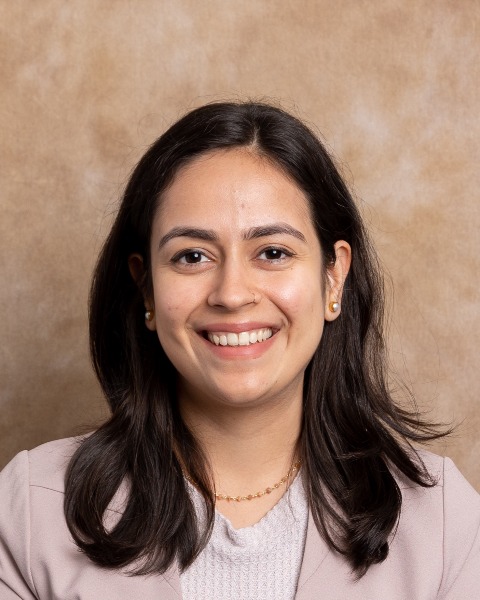Neural Engineering
(K-419) Investigating Chondroitin Sulfate as a Bioactive Coating for Neural Interfaces

Nikita M. Reddy (she/her/hers)
Undergraduate Student Researcher
University of Pittsburgh
Ashburn, Virginia, United States
Vaishnavi Dhawan, M.S. (she/her/hers)
Graduate Student Researcher
University of Pittsburgh
Pittsburgh, Pennsylvania, United States- XC
Xinyan Cui, Ph.D. (she/her/hers)
Professor, Chief Scientific Officer
University of Pittsburgh, Vanish Therapeutics, United States
Presenting Author(s)
Co-Author(s)
Primary Investigator(s)
Neural implants enable bidirectional communication between biological tissue and electronic devices, enabling stimulation and recording of neural activity for neuromodulation and neuro-prosthetic applications. Despite their promise, these implants experience a foreign body response (FBR) including acute and chronic inflammation, neuronal loss, and glial scar formation, which collectively deteriorate the implant signal quality. To overcome this issue while promoting seamless integration of the device, bioactive surface coatings have been utilized. This work investigates chondroitin sulfate (CS), a glycosaminoglycan with charged sulfate groups, as a bioactive coating for neural devices. The presence of hydroxyl and sulfate side groups allows immobilized CS to impart hydrophilicity to the surface, which can prevent non-specific adsorption of serum proteins and potentially reduce the FBR in vivo.
This study also investigates the interaction of the CS with microglia, the resident macrophages of the brain that coordinate inflammatory events. Studying how CS affects microglial phagocytotic nature can provide a deeper understanding of the effect CS has on the brain’s inflammatory response. Immobilized CS coating can bind to MCP-1, a key chemokine involved in activation of pro-inflammatory species. CS coating can potentially disrupt this signaling by sequestering MCP-1 onto the device surface and dampening microglial activation. CS is thus hypothesized to have an inhibitory effect on cultured microglia which can ultimately reduce their phagocytotic ability. This study aims to understand the impact of the hydrophilic nature of the coating as well as investigate its effect on the phagocytic ability of microglia.
Materials and Methods::
Explant Analysis With Scanning Electron Microscopy
Uncoated and CS-coated non-functional silicon electrodes were bilaterally implanted (3 mm posterior to bregma, 4 mm lateral to midline) in C57BL/6 male mice (n = 5) for 1-week. Animals were then transcardially perfused, probes were carefully explanted, and submerged in 100% ethanol for 5 days, followed by air-drying for another 5 days. Probes were carefully detached from the skull, pressed flat on conductive tape, and sputter coated with 5-10 nm gold-palladium, and scanning electron microscope (SEM) images were taken. The region of interest was isolated in Fiji, appropriate pixel thresholds were selected, and these thresholds were run through a custom MATLAB script to determine tissue coverage values.
Microglial Phagocytosis Assay
Primary post-natal day 2 rat microglial cells were seeded onto CS-coated and uncoated 8-mm diameter glass coverslips and grown for 24 hours. Fluorescent latex beads were pre-opsonized (1:5) with fetal bovine serum, diluted with microglia medium (0.1% v/v) and added to cultured microglia. After 1-2 hours of incubation, they were washed with ice-cold 1x PBS 5 times, and fixed with 4% paraformaldehyde for 20 minutes. 2 independent cell cultures were performed, and cells were imaged (3 wells per condition, 3 images per well, N = 9 images) using Leica DMI4000 B and stained for nuclei (DAPI) and microglia (Iba-1). The percentages of primary microglia cells expressing phagocytotic ability over the total microglia cell count were manually calculated.
Results, Conclusions, and Discussions::
CS-coating reduces non-specific protein and tissue binding
In the MATLAB script, the cumulative count of pixel values outside of the chosen threshold range represented tissue coverage while the count of values within the threshold range indicated non-coverage areas. Percentage tissue coverage was calculated by dividing tissue coverage by the total pixel count. Quantified tissue coverage on probes was significantly lower in CS-coated conditions (56.27%±6.89 Welch’s T-test with p = 0.0095 for N = 6) as compared to the uncoated control (72.23%± 6.82 for N = 4). This decrease in tissue coverage indicates that the CS coating helped reduce non-specific protein and tissue attachment. This antifouling nature of the CS potentially suppressed further recruitment of serum proteins which can dampen the inflammatory cascade.
CS-coating decreases microglia phagocytosis
To get a % bead uptake by cells, the cells expressing all three markers (Iba-1, DAPI, and beads) were considered phagocytosis+ cells and were divided by the total number of Iba-1/DAPI-positive cells. Quantified microglial phagocytosis-positive cells were significantly lower in the CS-coated conditions (11%±13 one-way ANOVA with Turkey’s post-hoc comparison tests p = 0.0037 for N = 9 images per sample) as compared to the bare samples (26%±21 p = 0.0126 < 0.05 for N = 9 images per sample). This decrease in phagocytosis-positive cells indicates a potential anti-inflammatory effect of the CS coating.
Conclusion
These experiments demonstrate that using chondroitin sulfate as a bioactive coating can potentially reduce the inflammatory tissue responses by preventing non-specific protein adsorption and reducing microglial attachment and activation. The results show that CS has promise to promote a more seamless integration between a neural implant and brain tissue. Future work will examine the binding mechanism between the negatively charged sulfate groups on CS and MCP-1, one of the key chemokines regulating the recruitment and activation of monocytes and microglia in the brain. Through this work, we plan to develop a biomimetic coating with multiple benefits towards reducing the FBR and promoting seamless integration between neural-tissue interfaces for eventual clinical applications.
Acknowledgements (Optional): :
References (Optional): :
